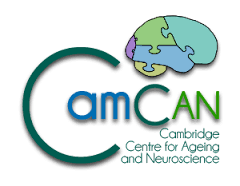CBSU bibliography search
To request a reprint of a CBSU publication, please
click here to send us an email (reprints may not be available for all publications)
Evidence for stimulus-specific but not process-specific contributions of MTL structures to recognition memory for faces and scenes.
Authors:
Taylor, K., Graham, K., SCHWARZBAUER, C. & HENSON, R.
Reference:
Proceedings of the 38th Annual Meeting of the Society for Neuroscience
Year of publication:
2008
CBU number:
6820
Abstract:
We have previously demonstrated that whereas amnesic patients with broad medial temporal lobe (MTL) damage show impaired recognition memory (RM) for faces and spatial scenes, patients with circumscribed hippocampal lesions show a selective preservation of face RM. We proposed that the selective RM deficit associated with hippocampal damage was the result of specialisation within the MTL according to stimulus category, with the hippocampus and perirhinal cortex playing essential roles in scene and object processing respectively. An alternative explanation, however, which follows from dual-process models, is that scene RM is more dependent on hippocampally-mediated recollective processes, whereas RM for faces can be adequately supported by familiarity signals in adjacent cortical regions; i.e. it is the type of memory process, rather than nature of stimuli, that best explains the division of labour in the MTL. In order to investigate these two hypotheses, we conducted an fMRI study involving RM for faces and scenes, which included a remember/familiar (R/F) decision to assess recollection and familiarity. Our analyses focussed on three regions of interest (ROIs): hippocampus, parahippocampal and perirhinal cortex and we optimised coverage of these regions using a novel dual-echo sequence. Analysis of the study phase revealed an interaction between stimulus and memory in the hippocampus and parahippocampal cortex, such that activity in these regions positively correlated with subsequent memory for scenes but not for faces. Main effects of stimulus were observed in all ROIs during both study and test: the perirhinal cortex was more active for faces than scenes, whereas the hippocampus and parahippocampal cortex showed the reverse effect. Considerable overlap between these functional effects and the areas of common damage in the hippocampal amnesics was observed for the main effect of scenes versus faces, but not for the interaction, suggesting that the impairments observed in these patients may have been caused by disruption to the formation of spatial representations, rather than impairments in scene-specific mnemonic processes. Contrasts designed to identify effects of recollection and familiarity failed to reveal any significant differences between the ROIs, but rather suggested that all of these regions make some contribution to both processes. To summarise, these findings are inconsistent with the division of labour proposed by some dual-process models, and instead add to the growing body of evidence that MTL regions can be dissociated according to their contributions to the formation of representations of different stimulus categories.

 MRC Cognition and Brain Sciences Unit
MRC Cognition and Brain Sciences Unit

